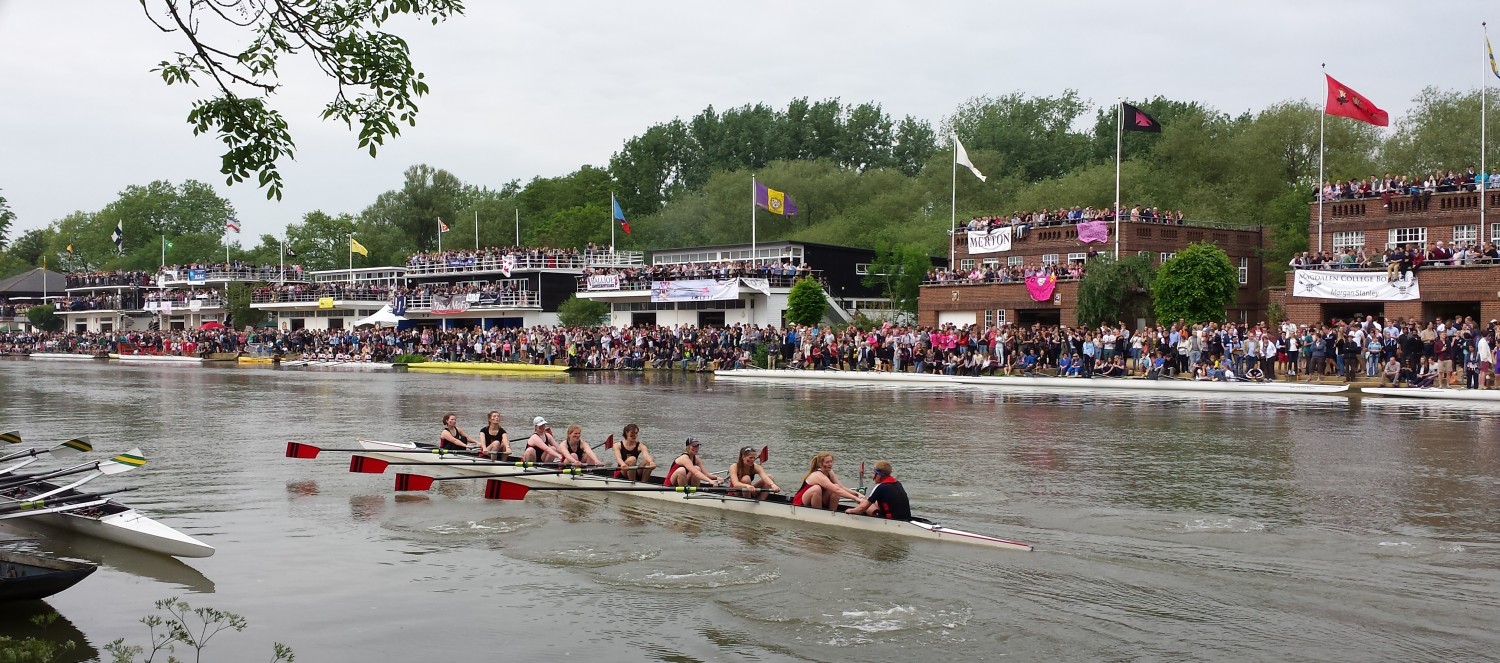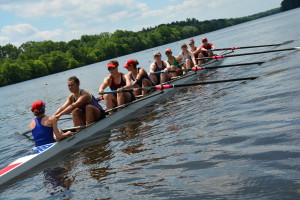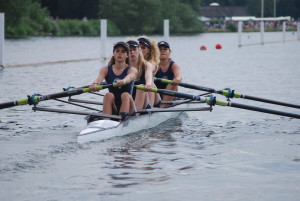Eric Sims and Kanghua Boats – by Howard Aiken
Eric Sims is a man with a long history in boat building. He made his start some thirty years ago with a second hand mould and some encouragement from friend and international rowing coach Mike Spracklen. Composite materials were by then being adopted by leading constructors in Formula 1, and Eric’s contacts in the motor racing industry were able to provide useful advice and guidance on their deployment in boat-building.
A few years later he was working with John Langfield at Eton College, who was about to undertake the wholesale conversion of Eton’s fleet of boats to composites. Again Eric and his contacts in motor racing were instrumental in successfully bringing composite technology into Eton’s boat building tradition. Eric was also an early member of the team which designed and built Eton’s Dorney Lake rowing centre and was involved with a wide range of projects from the timing systems (Eric was originally an electrical engineer) to the design of the landing stage and the anchor blocks for the buoys marking the course.
Eton Racing Boats – effectively the boatbuilding department of Eton College, ended over a century of boat-building in the late 1990s but Eric continued to provide boat repair services and equipment via his own company, ES Rowing Services. He also provided consultancy services to other manufacturers, among them a previously unknown company, Kanghua Boats of Hangzhou, China.
It’s about manufacturing – and quality control.
Any fan of rowing who has been paying attention to competitions during the last few seasons will have noticed the arrival of Chinese-built boats in ever larger numbers at local, national and international events. Kanghua boats first came to our notice in Europe two years ago when the Danish national team won a bronze medal in their Kanghua quad in the 2013 Rowing World Championships. Last year, Kanghua boats bagged two gold medals at the Junior World Championships and two wins at Women’s Henley, and the US U23 women’s squad have also switched to Kanghua boats.
Eric Sims spent two years working as a consultant to Kanghua before they launched into the European market. They were initially seeking his particular expertise in rigging design and the use of 4k carbon fibre. The outcome of this collaboration is the two current Kanghua ranges, known as the Spirit and Phantom, for which ES Rowing is now a distributor. Both ranges of boats are based on the popular hull shapes widely used in top-class competition. Like many other boats worldwide, the top-of-the-range Kanghua Spirits use all-carbon laminate for light weight and increased stiffness. They are FISA minimum weight and are equipped with riggers manufactured in the UK by ES Rowing Services. The Kanghua Phantoms feature a Nomex honeycomb core with a carbon and glass fabric outer skin, while remaining lightweight and strong. Both Spirit and Phantom are available in the full range of weights and sizes.
Their design objective was not to produce some new innovation in hull design but to replicate well-proven hull shapes and produce them in high quality materials but at a substantially lower price. The savings are significant. Kanghua boats can be up to £1000 cheaper per seat than their competition. Nevertheless, Eric highlights their 5-year warranty as a mark of confidence in their build quality.
They are also designed to be compatible with widely available ranges of rigging equipment, including rudders, seats, slides and footplates – the kind of equipment the average club boatman will have in his workshop.
Meeting rowing clubs everyday, real-world needs
Kanghua’s warranty covers buyers against manufacturing defects. However accidents do happen when boats are in regular use. Luckily, Eric Sims also knows a great deal about repairing boats and how their construction can make that easier or more difficult. Briefly, boats built with Kevlar or Dyneema in the outer skin, or boats which flaunt the weave of their carbon fibre through a transparent finish all make for repair shop nightmares. With this in mind he has ensured that Kanghua boats are built to be easy to repair.
These are the real-world drivers behind the Kanghua design philosophy. The vast majority of rowing clubs manage a mixed fleet of boats from different manufacturers. Their boatman keeps a selection of spares for the on-the-spot repairs routinely needed to keep boats available for use. He wants seats, slides, footplates and rudders to be interchangeable at least between boats of the same size and if a boat gets damaged, he’d like to be able to make at least small repairs on site without spoiling the look of the boat. Kanghua boats are designed to meet this need and to do so at a very competitive price.
That is not to say that they are a lowest-common-denominator among boats. Eric was not happy with the quality of the stainless steel parts available in China so all the steel components are sourced in Europe. Similarly, he found that he could not source the aerospace grade aluminium needed for the riggers in China, so these are also manufactured in the Europe. The end result is very competitive mix of Chinese and European expertise designed to meet the needs of rowers from club to international level, around the world.
Results so far have been very promising, with more than 1000 racing hulls shipped in 2014, so we can expect to see more of the Kanghua name in future.
Learn more about ES Rowing services at http://www.esrowingservices.co.uk/ and more on Kanghua Boats is available at http://www.kanghuaboats.com/ .
This article originally appeared in Issue 8 of Row360 magazine.


